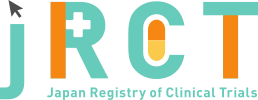臨床研究等提出・公開システム
|
Nov. 29, 2019 |
|
|
Oct. 05, 2021 |
|
|
jRCT2032190148 |
Efficacy and safety of a smartphone application "HERB" added to treatment as usual for essential hypertension: a multicenter randomized controlled phase III study (HERB trial) |
|
Efficacy and safety of a smartphone application "HERB" added to treatment as usual for essential hypertension: a multicenter randomized controlled phase III study (HERB trial) |
|
Dec. 26, 2020 |
|
390 |
|
Full details of study inclusion and exclusion criteria have been published previously.Briefly, eligible patients were aged 20 to 64 years, had a diagnosis of essential hypertension (office BP 140 to 179/90 to 109 mmHg) with mean 24 h BP determined using ambulatory BP monitoring of more 130 mmHg, did not use antihypertensive medication for more 3 months prior to enrolment, were able to use a smartphone daily, and were considered appropriate to be managed with lifestyle modification for 12 weeks. Patients with suspected secondary hypertension or who required immediate antihypertensive medication due to medical history or comorbidities were excluded. |
|
Randomization (1:1) was performed automatically using the electronic data capture system. Randomization was stratified by the following factors: study centre, history of antihypertensive medication use (more 3 months previously), and 24-h SBP at baseline (more 145 or less 145 mmHg). Study visits took place at Weeks 4, 8, and 12 after randomization. In addition, patients were further evaluated after the end of study intervention (at Weeks 16, 20, and 24) and were divided into subgroups based on the antihypertensive medication usage within each randomized group. |
|
A total of 91 patients (45.5%) in the digital therapeutics group and 54 (27.8%) in the control group reported any adverse event during the study ; none of these were considered to be related to the digital therapeutics system. There were two serious adverse events in each group: one admitted to hospital for pulmonary embolism in the digital therapeutics group and one lymphoma in the control group. No psychological adverse events were reported in either group. |
|
Primary endpoint The mean change from baseline to 12 weeks in 24-h ambulatory SBP was significantly greater in the digital therapeutics vs. control group (-4.9 vs. -2.5 mmHg; between-group difference -2.4, 95% confidence interval (CI) -4.5 to -0.3, P = 0.024). Results were consistent in a sensitivity analysis using the per-protocol population (between-group difference -2.4 mmHg, 95% CI -4.5 to -0.3, P = 0.026). Secondary endpoints Compared with the control group, patients in the digital therapeutics group showed significantly greater reductions from baseline in morning home SBP (between-group difference -4.3 mmHg, 95% CI -6.7 to -1.9, P 0.001), evening home SBP (between-group difference -3.3 mmHg, 95% CI -5.8 to -0.7, P = 0.013), and office SBP (between-group difference -3.6 mmHg, 95% CI -6.2 to -1.0, P = 0.006) . Reductions from baseline in ambulatory, home and office DBP and heart rate were also significantly greater in the digital therapeutics group vs. control . The proportion of patients achieving morning home BP less 135/85 mmHg at 12-week follow-up was 22.2% in the digital therapeutics group and 10.4% in the control group. |
|
The study was an open-label, randomized controlled trial in Japan. Patients with hypertension were randomly assigned 1:1 to the treatment group (HERB system plus standard lifestyle modification) or the control group (standard lifestyle modification only). he primary endpoint was the change from baseline in ABPM 24-hour SBP, and the treatment group showed a significant antihypertensive effect compared to the control group. |
|
Aug. 27, 2021 |
|
Aug. 27, 2021 |
|
https://academic.oup.com/eurheartj/advance-article/doi/10.1093/eurheartj/ehab559/6358480 |
No |
|
https://jrct.mhlw.go.jp/latest-detail/jRCT2032190148 |
Kario Kazuomi |
||
Jichi Medical University Hospital |
||
3311-1 Yakushiji, Shimotsuke-shi, Tochigi-ken, Japan 329-0498 |
||
+81-285-44-2111 |
||
kkario@jichi.ac.jp |
||
Nakagawa Kiyose |
||
CureApp, Inc. |
||
Kodenma-Cho YS building 4th floor 12-5, Nihonbashi Kodenma-Cho, Chuo-ku, Tokyo |
||
+81-3-6231-0183 |
||
clin-reg@cureapp.jp |
Complete |
Nov. 29, 2019 |
||
| Jan. 06, 2020 | ||
| 360 | ||
Interventional |
||
randomized controlled trial |
||
open(masking not used) |
||
active control |
||
parallel assignment |
||
treatment purpose |
||
(1) 20 years old or older and under 65 years old |
||
(1) SBP in clinical settings: >=180 mmHg; and/or DBP in clinical settings: >=110 mmHg |
||
| 20age old over | ||
| 65age old not | ||
Both |
||
essential hypertension |
||
HERB is a digital therapeutic system to be adapted to the standard treatment for hypertension. The system consists of HERB Mobile: a smartphone app for patients, HERB Console: a web application for doctors and healthcare workers. HERB Mobile aims to improve hypertension through lifestyle modification. It encourages optimal behavioral change for each patient. Doctors and healthcare workers can also check the status of lifestyle modification situations through HERB Console. HERB Console supports doctors and healthcare professionals providing better treatment instruction for patients. |
||
hypertension |
||
Life style modification |
||
D000075222 |
||
D008019 |
||
Change in 24-hour SBP measured by ABPM from baseline to week 12 |
||
(1) |
||
| CureApp, Inc |
| Jimbo Orthopedics Institutional Review Board | |
| 5-38-41, Honcho, Koganei-shi, Tokyo | |
| Approval | |
Oct. 24, 2019 |
none |
